The GEN Z Series travels from Brazil to the University of Sheffield to meet 2023 graduated Bulgarian landscape architect Kalina Asenova. She hails from the Capital city Sofia. Her family comes from the Bulgarian countryside. Kalina Asenova informs, “My childhood was spent travelling and spending a lot of time in the countryside. I grew up with a love for the calm and idyllic countryside life and also a need for the energetic, full of opportunities bustling city. My parents worked in the management and logistics fields. In spite of their respective fields, my parents always encouraged my art-related inclination during my growing up years.”
Kalina Asenova continues, “I have always been a curious kid, especially when it came to learning about different countries and cultures. Because of both of these facts, I have been dreaming of traveling and possibly studying abroad. I discovered landscape architecture, when I got to study in an architecture-focused High School. In my final year, I applied to multiple landscape architecture courses across the UK and I landed up in Sheffield. While I have loved living abroad and will probably continue my practice across the world, I hope to one day be able to work on projects in my home country and help address a lot of urban-related issues that are prevalent in Bulgaria.”
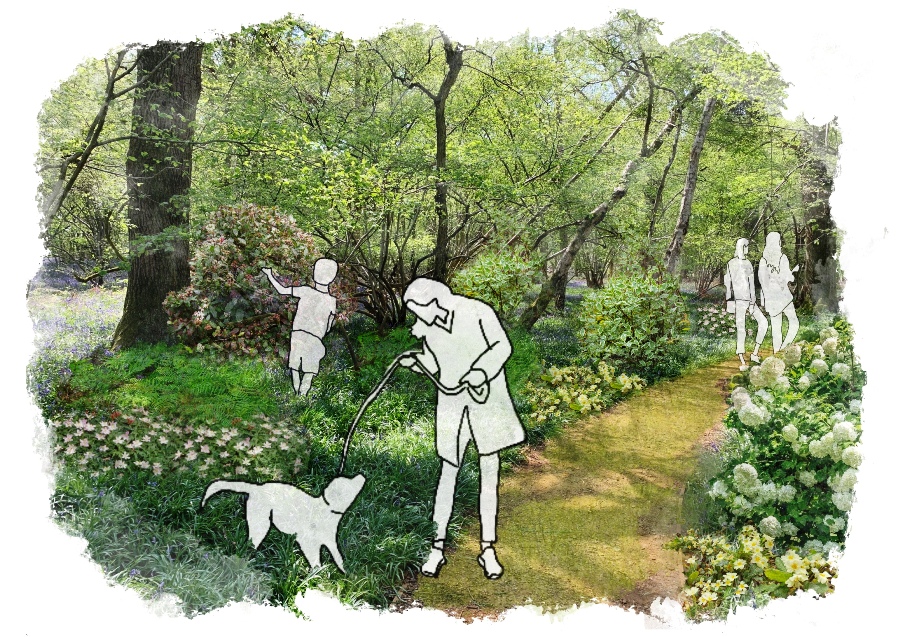
Open Area for Exploration
Kalina Asenova’s graduation thesis ‘Don Crafts Campus, Doncaster’ is about revitalization of the Doncaster College’s surrounding area. Doncaster, named after River Don, is a city in South Yorkshire, England. The city is the administrative centre of the City of Doncaster Metropolitan Borough. After Sheffield, it is the next largest settlement in South Yorkshire. Doncaster is known for its racing and railway history. It has an interesting location with Don Valley on the western edge of the Humberhead Peatlands levels and east of the Pennines Valley.
Johnny D talks to the talented and creative landscape architect Kalina Asenova to explore her quest in the field of landscape architecture.
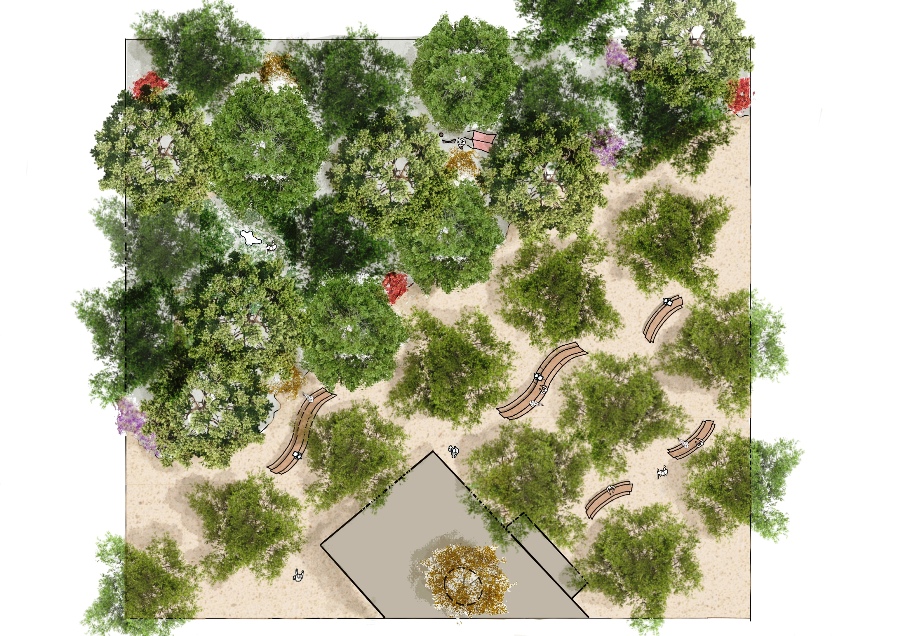
Master Plan of Detailed Area
What was your childhood ambition? Did you always wanted to become a landscape architect?
Growing up I had a new dream life every week (smiles). It would often be influenced by a person I meet or a movie I had seen. In High School, I got accepted in a landscape architecture-related class, which I had selected randomly and ended up developing an interest in it. It was not until recently that I remembered a fun activity I used to do as a 6-year-old. I would grab a piece of paper and create my own city by mapping it out. It always included facilities that I thought were important for the community. I guess cities and how they function have always been a passion of mine (smiles).
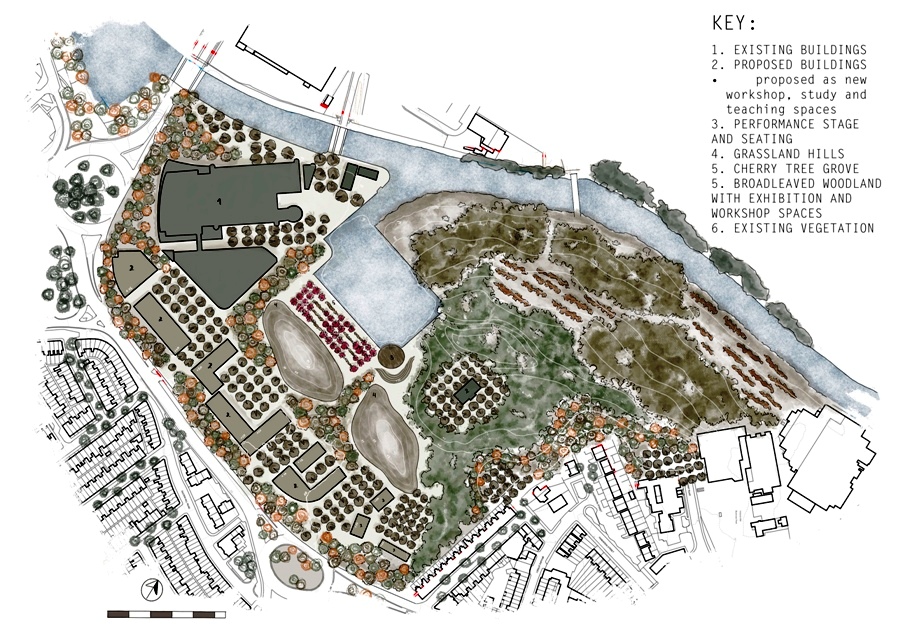
Master Plan
How has landscape architecture influenced your life as a student?
Since working on projects focused on the use of space, I have become very passionate about the social aspect of public spaces, as well as accessibility and functionality. I love going on walks around the city and I often catch myself thinking of ways to improve the space I am walking through. I am also very curious about the design of such spaces, whenever I travel to new countries and cities. I have also started to pay attention to the ways of the local communities or small businesses and how they have managed to elevate spaces through their own efforts and creativity.
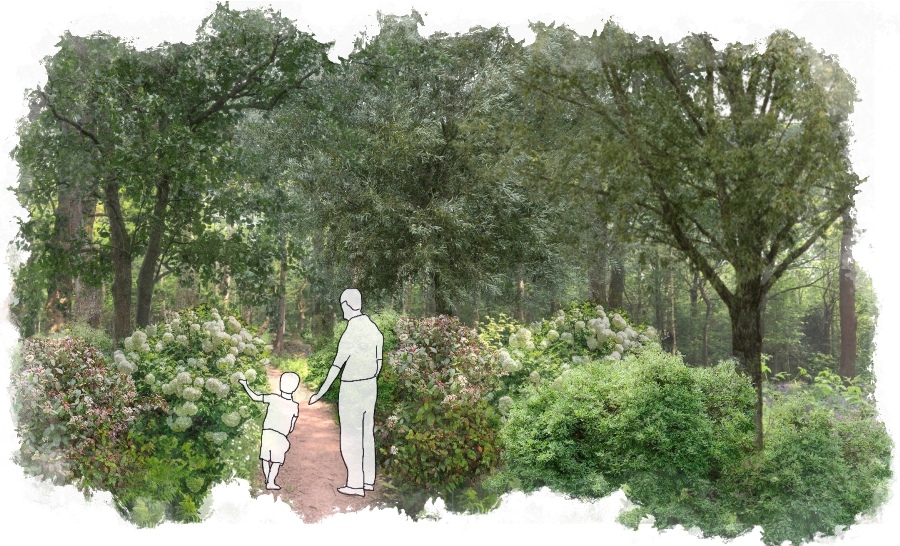
Immersive Woodland Path
Briefly tell us about your University and the Course.
My three-year Landscape Architecture Course at the University of Sheffield was extremely interesting and eventful. We were able to learn about many different aspects of landscape architecture, such as the history of garden design, materials, ways to make spaces sustainable and multi-functional, and urban green space regeneration. Our Course was accompanied by many field trips, workshops and guest talks, which allowed us to learn hands-on.
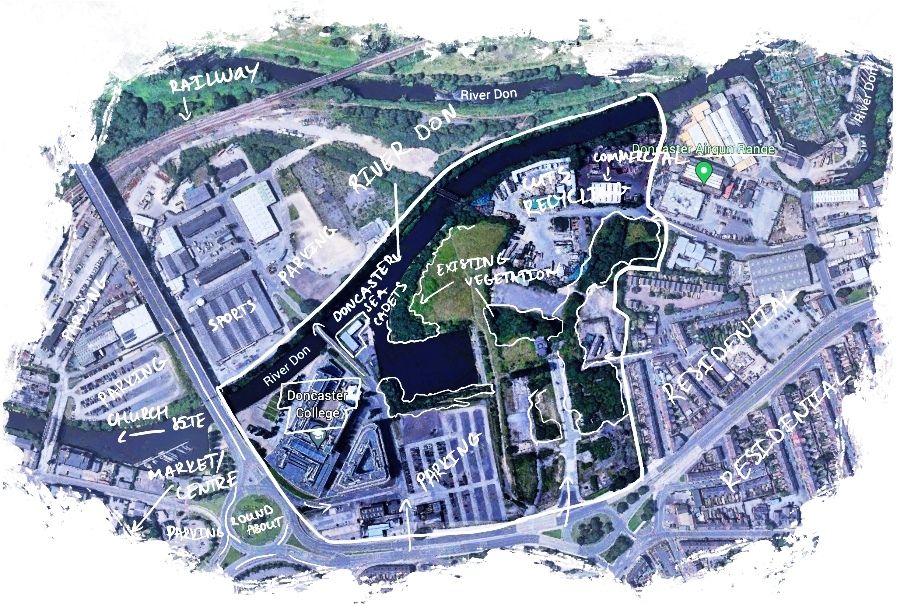
Site Analysis
Briefly describe the significance of your project with the ‘Title of the Project and Site Location’.
For my 3rd Year final project, I had to create a proposal that would help revitalize the area surrounding Doncaster College, located in Doncaster, UK. Doncaster has just recently received a city status, which has opened new opportunities for the area. Doncaster City Council has come up with an outline of aims for the city, which include integrating green spaces into urban areas as well as a focus on education.
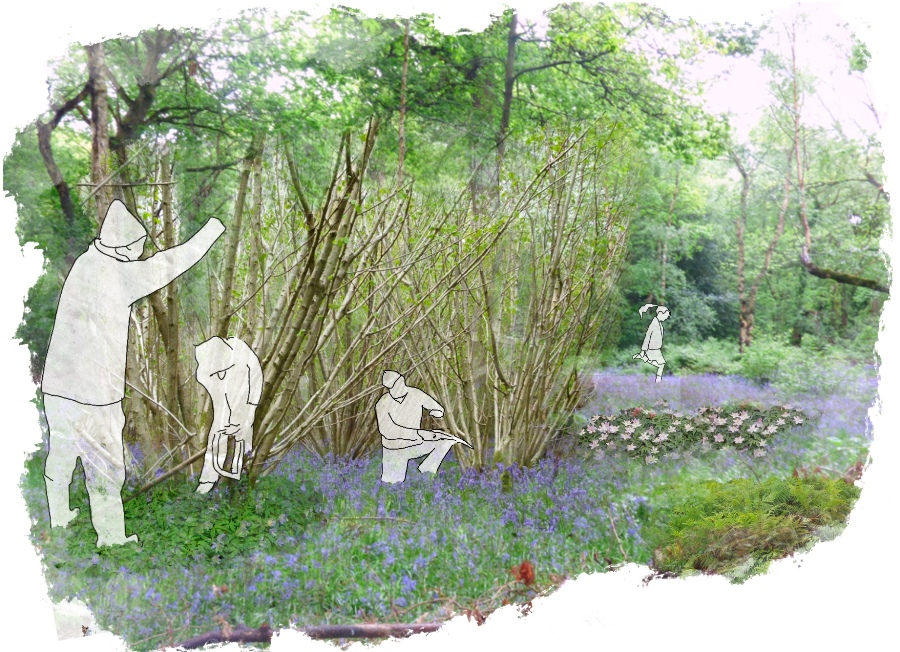
Coppicing Area
The site is quite big and is currently a car park. My project, ‘Don Crafts Campus’ is an urban forest on campus that aims to support Doncaster College’s proposed curriculum in traditional crafts by providing woodland that will produce materials for wood crafts through traditional woodland management, such as coppicing and pollarding.
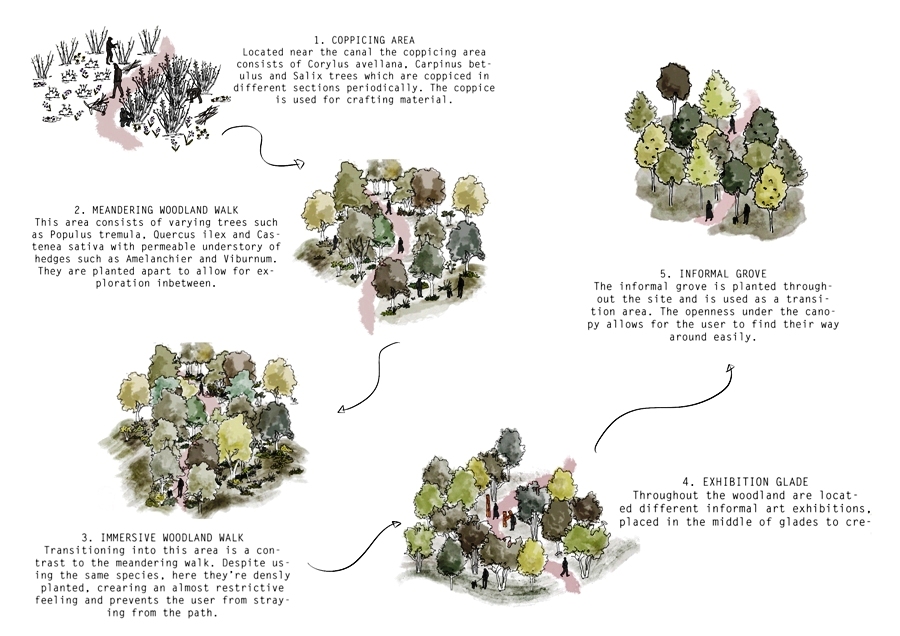
Area Typologies in Detail
The woodland consists of areas meant to be coppiced, as well as outdoor workshops. The tree types are chosen specifically to allow for the practice and are separated into groups for different stages of the growth process. The woodland also allows itself for recreational uses as it serves as an outdoor exhibition, with openings in the form of a glade throughout where one can find displays of artwork created by the students.
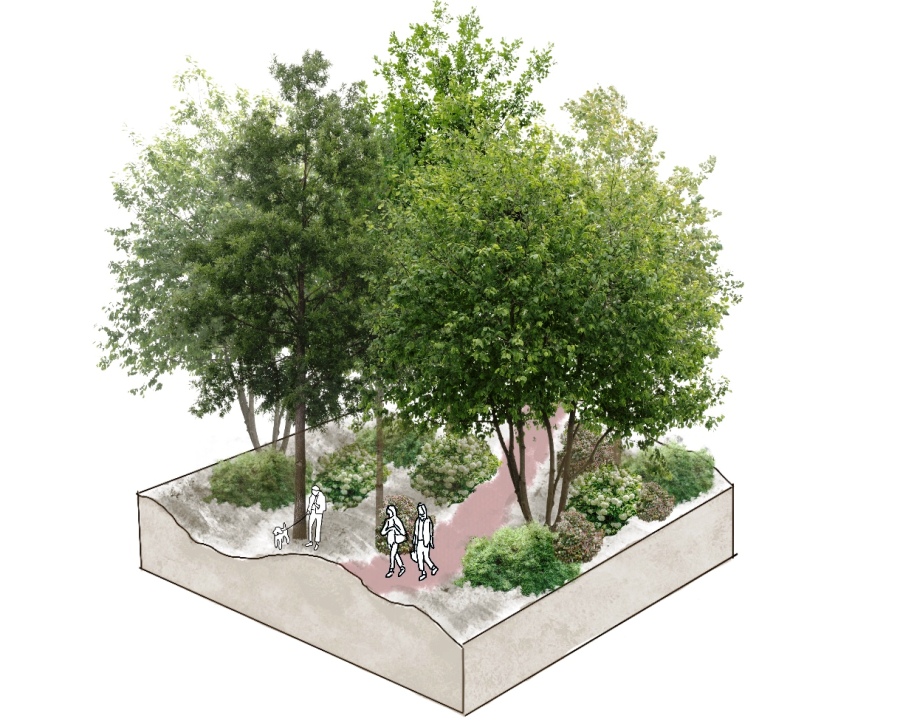
Woodland Typology within Detailed Area
Different areas of the woodland create varying experiences through changes in the vegetation’s density and ground typography. The newly introduced green space contributes to Doncaster’s aim for a greener city by providing diverse biodiversity and a recreational ground that welcomes both, the students and the locals.

Section Showcasing Woodland Typology Transition
Which National or International landscape architect has inspired / influenced you? Please specify as to why?
As part of my Course, I have had the opportunity to read some works by David Sim. His principles united by the term ‘soft city’ revolve around a sustainable environment, adaptability to weather conditions and designing according to the human scale. I find that implementing these principles would lead to a better and more thoughtful design that would benefit both, the society and the environment.
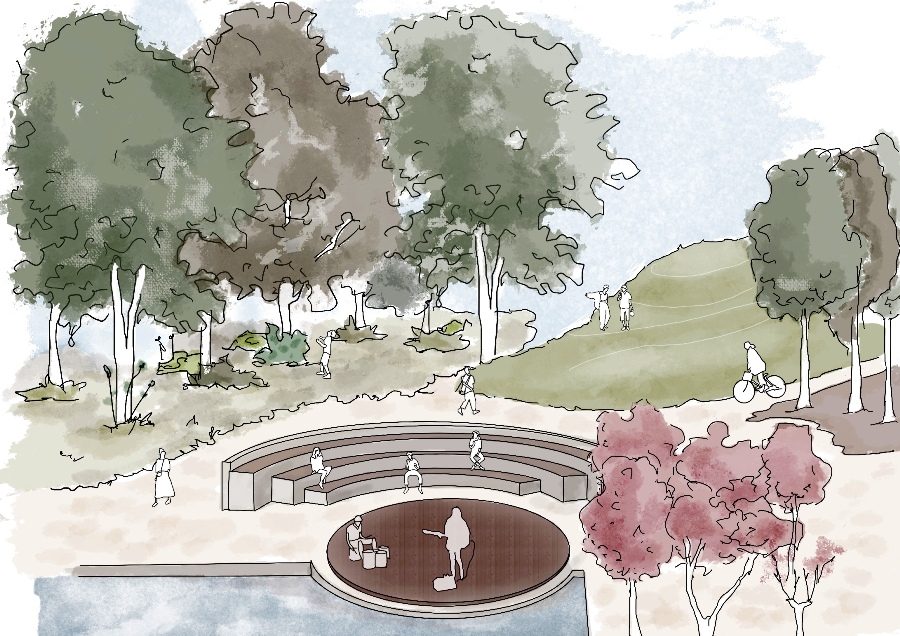
Performance Area
As an Intern, what is the most important lesson(s) you have learned from seniors, while being a part of a project?
I have not had the opportunity to work in a practice yet. However, I have learned a lot from my tutors at the University. One thing that was implemented by them was working with my peers. However, being curious about their work, seeking each other’s opinions and asking for their help because of that, we were able to think critically, exchange ideas and learn from each other.
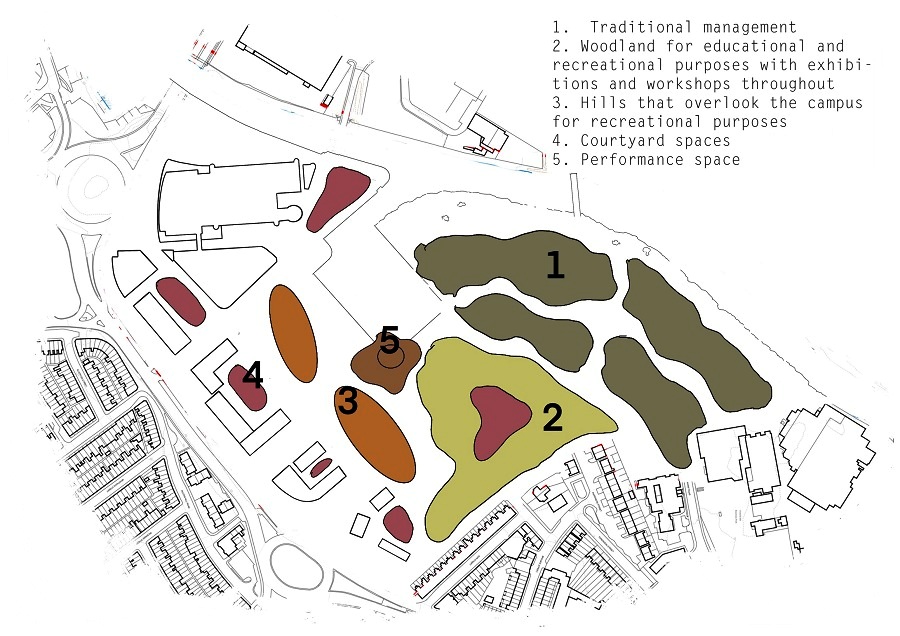
Activity Diagram
Hostile architecture is an eyesore and fast changing the urban landscape of prominent cities around the world creating discomfort to public. Architecture is meant to benefit the people / users at large, but the effects of hostile architecture are targeting people and depicting wickedness of the society and is against the ethos of architecture field. Elucidate your perspective about this unwanted trend in urban landscape.
Unfortunately, I have seen a lot of real-life examples of such trends and I believe it can come in many forms, such as the obvious intentionally hostile design, as well as at the expense of functionality and comfort of the public space. Urban spaces should be designed to benefit the public, no matter the socio-economic status of the users. Moreover, I think the design should aim to make all of its users feel welcome, safe and comfortable.
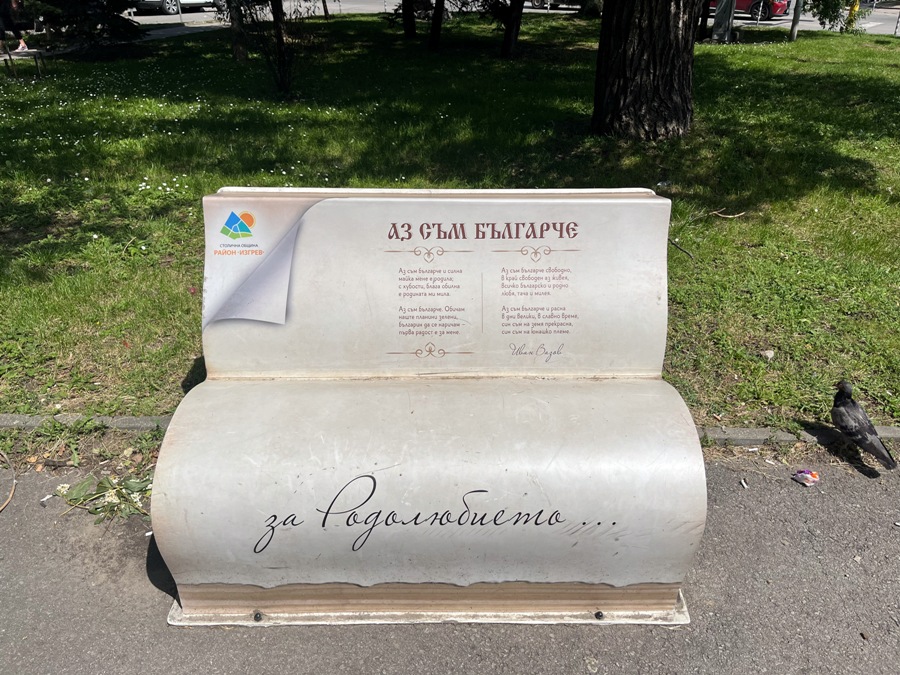
Hostile Architecture, Sofia
There are series of benches in the form of an open book in my home city, Sofia. While the design could be perceived as an art form to an extent, their location does not fit in with the surrounding areas. There are no educational institutions nearby. The bench design makes it impossible and hard to sit down for an extended period of time or lie down to relax self.
Which significant aspects of the global platform ‘zerobeyond – the new frontier!’ did you liked the most, and why?
The global platform unites many different aspects of urban design, such as architecture, landscape architecture, engineering and interiors. ‘zerobeyond – the new frontier!’ allows us to learn about the work and success of many different people from all over the world. The global approach of the platform can help us explore new projects. It is incredibly motivating to read about the success of people working in the same field as me. I am also very impressed with the Gen Z Series, which is very inspiring to me as a fellow Gen Z.
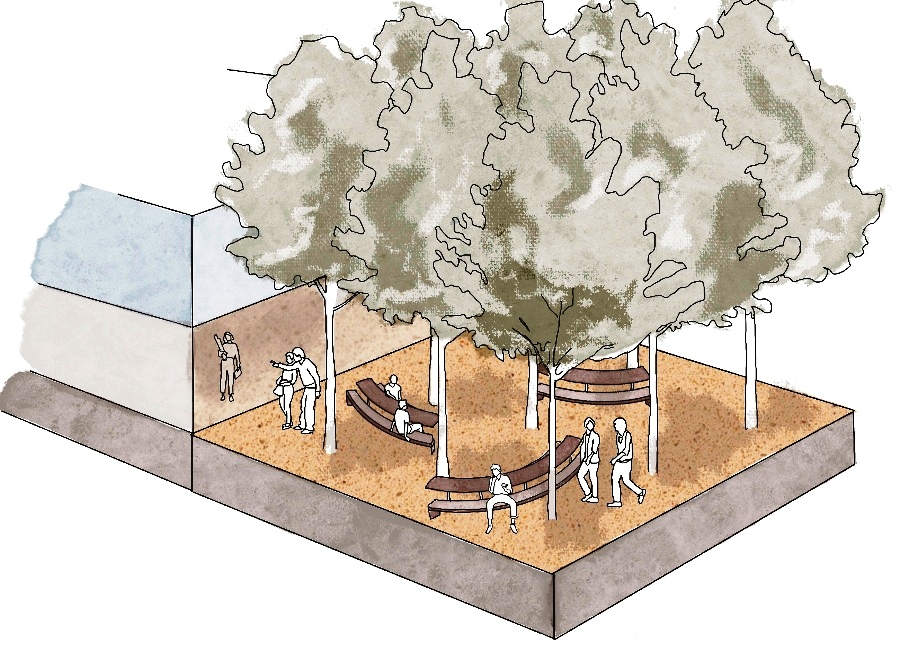
Courtyard in front of the Proposed Building
Local charm of cities has diminished due to Modern Architecture as every city looks alike and similar. How should architects / urban planners / landscape architects modernize cities, while maintaining the local charm intact?
It is somewhat hard to maintain local charm when we live in a well-connected world, where it is easy to exchange modern ideas. I think architects and urban planners should strive to approach projects with the uniqueness of each location. Embracing local architecture through architectural style, materials, colors and heights would make a city look cohesive and create harmony between the old and the new.
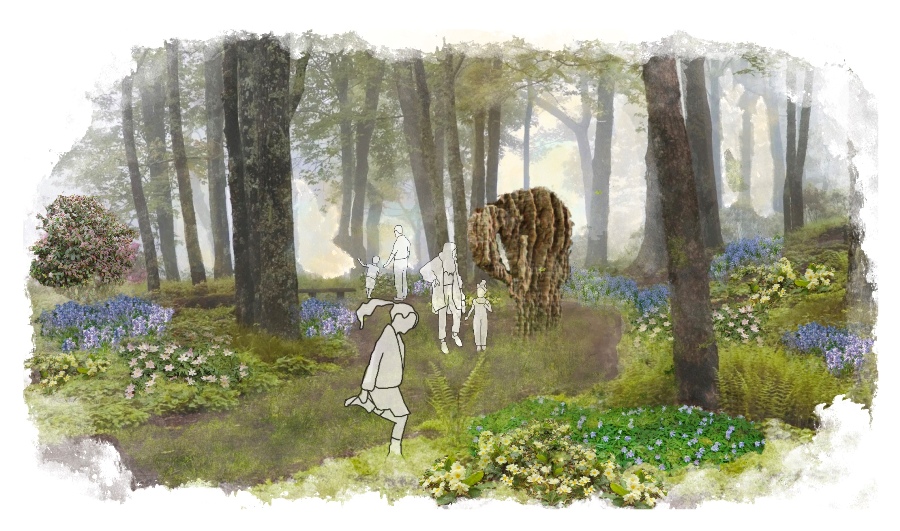
Exhibition Glade
Researching how the existing architecture has impacted the community could help design a better place. What has worked before? What has not? The involvement of the local community is incredibly important as they are the ones, who know how the space is used at the moment and what they think needs to be improved. Creating a space where people can indulge in their traditions and culture should be the aim.
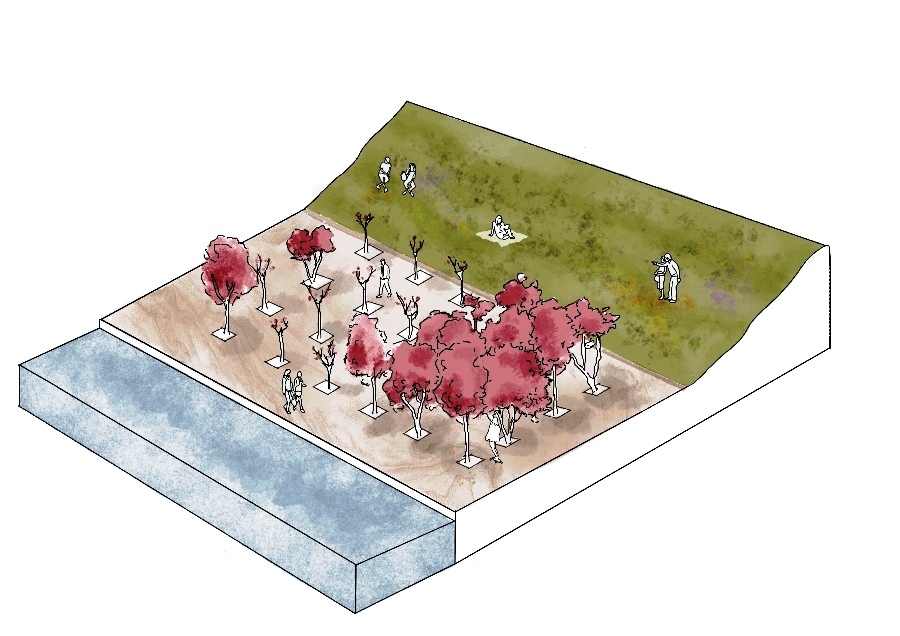
Cherry Tree Grove
The time to save Planet Earth from climatic catastrophes / human greed crisis has already slipped away from humans’ hands. Elucidate your views how the future of your generation and generations ahead are going to rise above the past generations to tackle this existential crisis?
From my observations, a lot of my Gen Z peers are aware of the damage that has been and continues to be done to our planet. Many young people strive to be sustainable through small or bigger actions. A lot of them are passionate about bringing awareness to the climate crisis. I believe that as we see many younger people come to positions, where they not only can express their opinions, but also put their words to action – we will see a big shift towards sustainable and ecological solutions to the existential crisis.
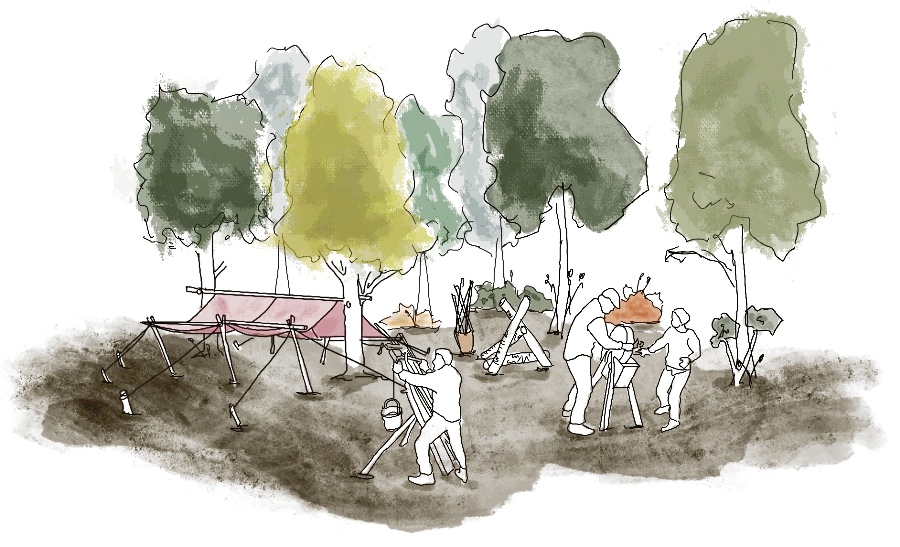
Outdoor Workshop
Looking at the past in the current present, what are the futuristic landscape and architectural changes you would like to see in your home city / town? Elucidate the reasons for your vision.

Moment of Pride
My home city Sofia is bustling and somewhat fast-paced. I consider it very pedestrian-friendly, well-connected and green. Despite this, there are a few things I would love to see improved. I think urban planners and the city council should be more considerate of the local community when working on new projects by taking into account their opinions on their needs and concerns. Moreover, maintenance of the existing infrastructure should be taken more seriously in order to create a safe, put-together environment.
Image Courtesy: Kalina Asenova